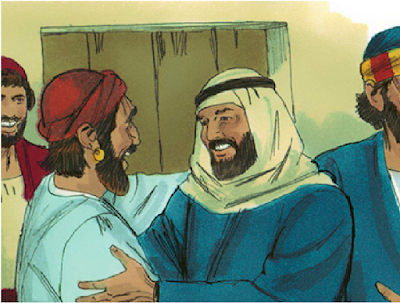Teaching Different Kinds of Younger Learners
Although most younger preschoolers are typically active, curious, and eager to learn, they may exhibit different learning styles. Are various learning styles linked to differences in temperament or personality? How can teachers meet the needs of all kinds of learners?
1. Childproof your space so that all learners are free to engage in a safe and healthy environment.
- Logical: Some preschoolers learn better in a relatively quiet, orderly, predictable room with clearly organized activities which meet their needs. Educators and psychologists may describe these children as having an analytic learning style or being logical learners. These preschoolers tend to enjoy looking at books, stringing large beads, or completing simple puzzles.
- Physical: Other preschoolers delight in a more free-flowing, creative, spontaneous approach to learning activities. Educators and psychologists describe these preschoolers as having a global learning style. They may also be described as physical learners who use their entire bodies to learn. They may especially enjoy learning through large motor activities and delight in opportunities to roll a ball or pull a musical toy.
- Visual: Some preschoolers tend to be visual earners. They tend to like pictures and may have a particular interest in scribbling or painting. All kinds of art materials hold fascination for them and offer limitless opportunities for creative expression.
- Verbal: Verbal learners like the sounds of words and enjoy stories, poems, and books. Sturdy books with familiar pictures of family members, pets, or farm animals interest verbal learners.
- Musical: Musical learners may have a specific interest in listening or moving to music, singing, or playing simple instruments.
- Reflective: Some preschoolers seem to enjoy learning on their own and need time to reflect. These children are known as reflective learners.
- Relational: In contrast, other preschoolers make friends easily and learn better while interacting with others. They are relational learners.
- Natural: Younger preschoolers may be particularly sensitive to God's natural world and can learn much from exploring nature items. These children are often called natural learners.
1. Childproof your space so that all learners are free to engage in a safe and healthy environment.
2. Consider the various learning styles of the preschoolers in your room and offer activities that appeal to all learners.
3. Visit each child's home and note the type of learning opportunities provided by his or her parents. Invite parents to describe the type of learning activity or play that seems to engage their child's interest.
4. Plan a variety of activities so that each type of learner experiences positive educational opportunities.
5. Acknowledge your own learning style and recognize your level of comfort with various types of learning experiences.
Recognize and appreciate the diversity of learning styles represented in the younger preschoolers you teach. Through a variety of appropriate activities, you are encouraging preschoolers to enjoy learning about God, Jesus, the Bible, creation, the church, themselves, and others.
-
3. Visit each child's home and note the type of learning opportunities provided by his or her parents. Invite parents to describe the type of learning activity or play that seems to engage their child's interest.
4. Plan a variety of activities so that each type of learner experiences positive educational opportunities.
5. Acknowledge your own learning style and recognize your level of comfort with various types of learning experiences.
Recognize and appreciate the diversity of learning styles represented in the younger preschoolers you teach. Through a variety of appropriate activities, you are encouraging preschoolers to enjoy learning about God, Jesus, the Bible, creation, the church, themselves, and others.
-




Comments
Post a Comment